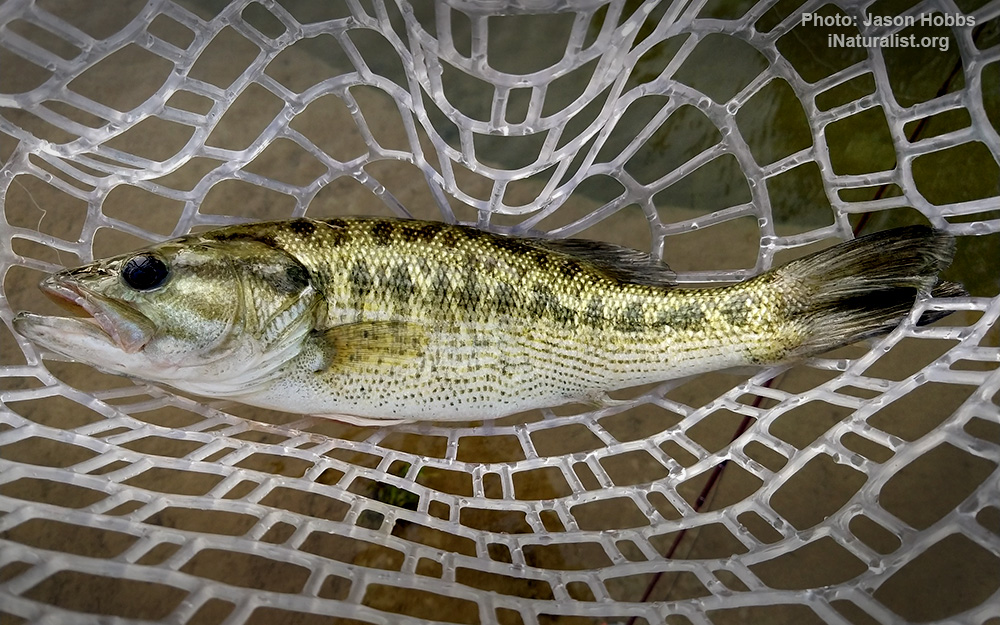Guadalupe bass
(Micropterus treculii)

Classification
General data
The Guadalupe bass (Micropterus treculii) is a rare species of fish endemic to the U.S. state of Texas, where it also is the official state fish. It is restricted to creeks and rivers (including the Guadalupe River, hence the name Guadalupe bass), and is listed as near threatened.
Today, most fly fishermen and anglers practice catch-and-release techniques to improve fish populations.
The Guadalupe bass is often difficult to distinguish from the smallmouth bass or spotted bass, and the fish is known to hybridize.
Guadalupe bass, like most black bass, are lime to olive green in color, this particular species being lighter in shade usually in river specimens. They have a lateral line covered in mostly separate diamond-shaped or circular spots, which with age fade from black to olive. Also, many smaller diamond marks are scattered on the back, which are less distinguished than the ones on the lateral line. They have a rectangular tooth patch on the tongue.
Its physical traits are very similar to the spotted bass (i.e. small mouth that does not extend past the eye, sleek figure, etc.) with one exception; the green coloring tends to extend lower on the body past the lateral line than their relatives. So far, the record catch is 3.71 lb (3 lb, 11.36 oz), caught by Dr. Bryan Townsend of Austin in 2014.
The fish is only found in Edwards Plateau in central Texas. Its main habitats are the San Marcos, Colorado, Llano, and Guadalupe Rivers. They can also be found in run-off creeks such as Barton Creek, Onion Creek, San Gabriel River, and the Comal River. The species has also been farm-raised and stocked in the Llano River.
The Guadalupe bass has almost no predators. Its main threat is not predation, but hybridization with the introduced smallmouth bass. The two species are very closely related and in some rivers almost half the Guadalupe bass are hybrids. The Texas Parks and Wildlife Dept stated it will likely stock many bass in the future to beat out the hybrid population. This will be a pilot for several other areas where rare spotted bass subspecies are having the same problems.
Typically, Guadalupe bass are found in streams and reservoirs; they are absent from extreme headwaters. They prefer flowing waters of streams within native variety, and use covers such as large rocks, cypress trees, or stumps for refuge. Juvenile fish are often found in fast-moving water but begin transitioning to deeper, moderate current towards the end of their first year.











